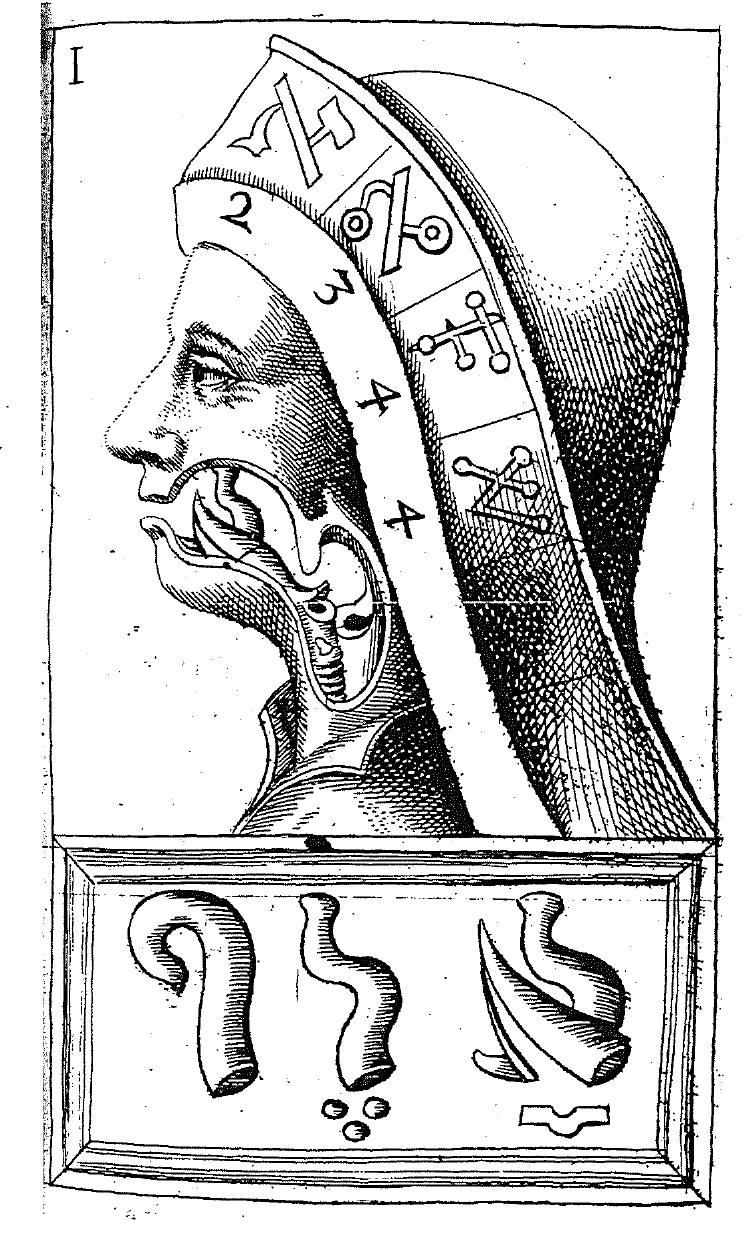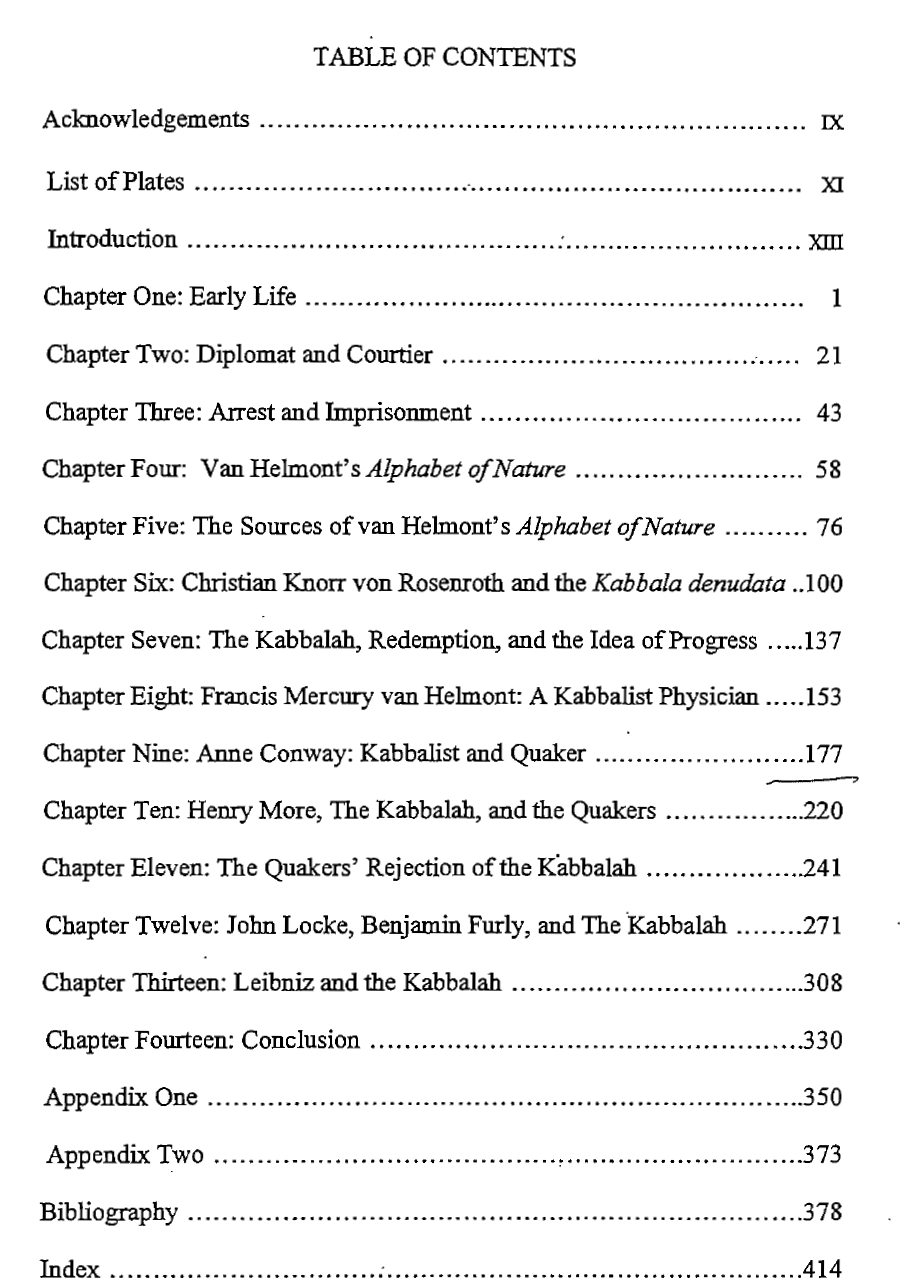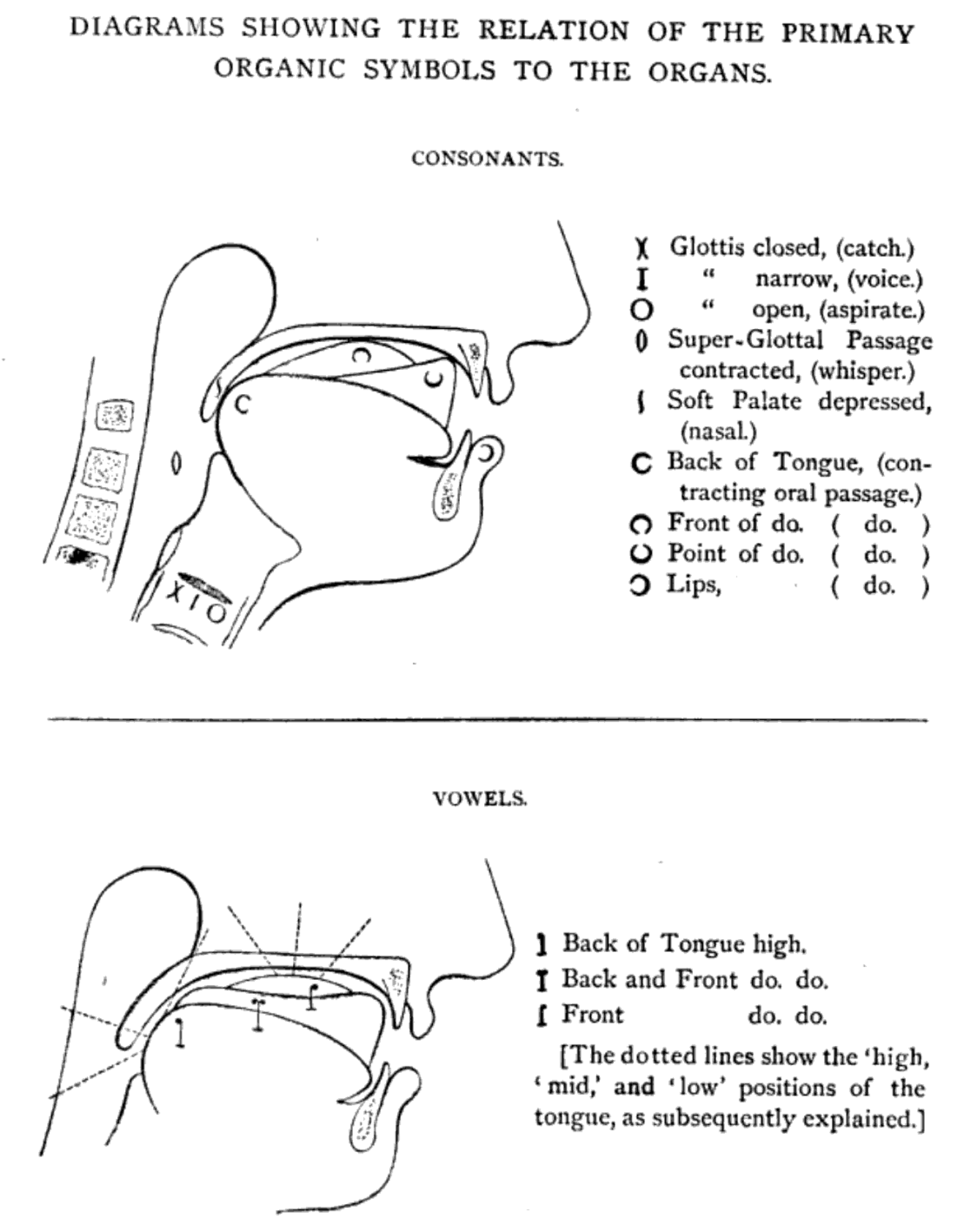Kabbalistic phonetics
« previous post | next post »
From Francis Mercury van Helmont, Alphabeti verè naturalis Hebraici brevissima delineatio : quae simul methodum suppeditat, juxta quam qui surdi nati sunt sic informari possunt, ut non alios saltem loquentes intelligant, sed & ipsi ad sermonis usum perveniant, 1667:
That image is scanned from Allison P. Coudert, The Impact of the Kabbalah in the Seventeenth Century: The Life and Thought of Francis Mercury van Helmont, 1999 — an excessively expensive book that's well worth reading. Here's the table of contents:
There are 26 similar illustrations in von Helmont's 1667 work — start here to see more.
For some later echoes of van Helmont's "alphabet as visible speech" idea, see (the end of) "Speech rhythm in Visible Speech", 12/18/2013.
Here's a similar diagram from Melville Bell's Visible Speech: The Science of Universal Alphabetics; Or Self-interpreting Physiological Letters, for the Writing of All Languages in One Alphabet, Illustrated by Tables, Diagrams, and Examples, 1867
Note that van Helmont's subtitle was explicit that his approach to the Hebrew alphabet "methodum suppeditat, juxta quam qui surdi nati sunt sic informari possunt, ut non alios saltem loquentes intelligant, sed & ipsi ad sermonis usum perveniant" == "supplies a method by which those who are born deaf can be so informed, that they may not only understand others who are speaking, but also themselves arrive at the use of speech".
…which was exactly what Melville Bell intended.



Victor Mair said,
March 27, 2024 @ 6:52 pm
Hangul, the Korean alphabet, is widely believed by its enthusiasts to be based on similar assumptions about the relationships between the shapes of the letters and the parts of the vocal tract used to produce them.
=====
The letters for the five basic consonants reflect the shape of the speech organs used to pronounce them, and they are systematically modified to indicate phonetic features; similarly, the vowel letters are systematically modified for related sounds, making Hangul a featural writing system.
(Wikipedia)
https://en.wikipedia.org/wiki/Hangul
=====
This fanciful legend was decisively disproven by Gari K. Ledyard in his magisterial 1966 UC Berkeley dissertation, "The Korean Language Reform of 1446: The Origin, Background, and Early History of the Korean Alphabet" (PhD Diss., University of California). In it, Ledyard showed that the invention of Hangul was in part due to the creative adoption of elements of the 'Phags-pa script, an alphabet designed by the Tibetan monk and State Preceptor Drogön Chögyal Phagpa for Kublai Khan, the founder of the Yuan dynasty in China, as a unified script for the written languages within the Yuan.
See also Ledyard's "The International Linguistic Background of the Correct Sounds for the Instruction of the People" (unpublished paper, 74 pp.).
Cf. Roger Finch, "Korean Hankul and the hP'ags-pa script", Writing in the World, Studia Orientalia, 87 (Helsinki, 1999), 79-100.
file:///Users/vmair/Downloads/45150-Article%20Text-32018-1-10-20140509.pdf
In Victor H. Mair, "Buddhism and the Rise of the Written Vernacular in East Asia: The Making of National Languages", Journal of Asian Studies, 53.3 (August, 1994), 731-738 of 707-751, I discuss the contributions of the hP'ags-pa script, Buddhist phonological sources, and King Sejong (1397-1450), among other elements, in the making of the Hangul alphabet.
Victor Mair said,
March 27, 2024 @ 6:53 pm
Cf. "Lojban just got harder" (4/5/15)
https://languagelog.ldc.upenn.edu/nll/?p=18549
David Marjanović said,
March 28, 2024 @ 1:09 pm
Yes, but those elements were cherry-picked so they fit an ingenious reinterpretation. This reinterpretation is what has become known as the fanciful legend.